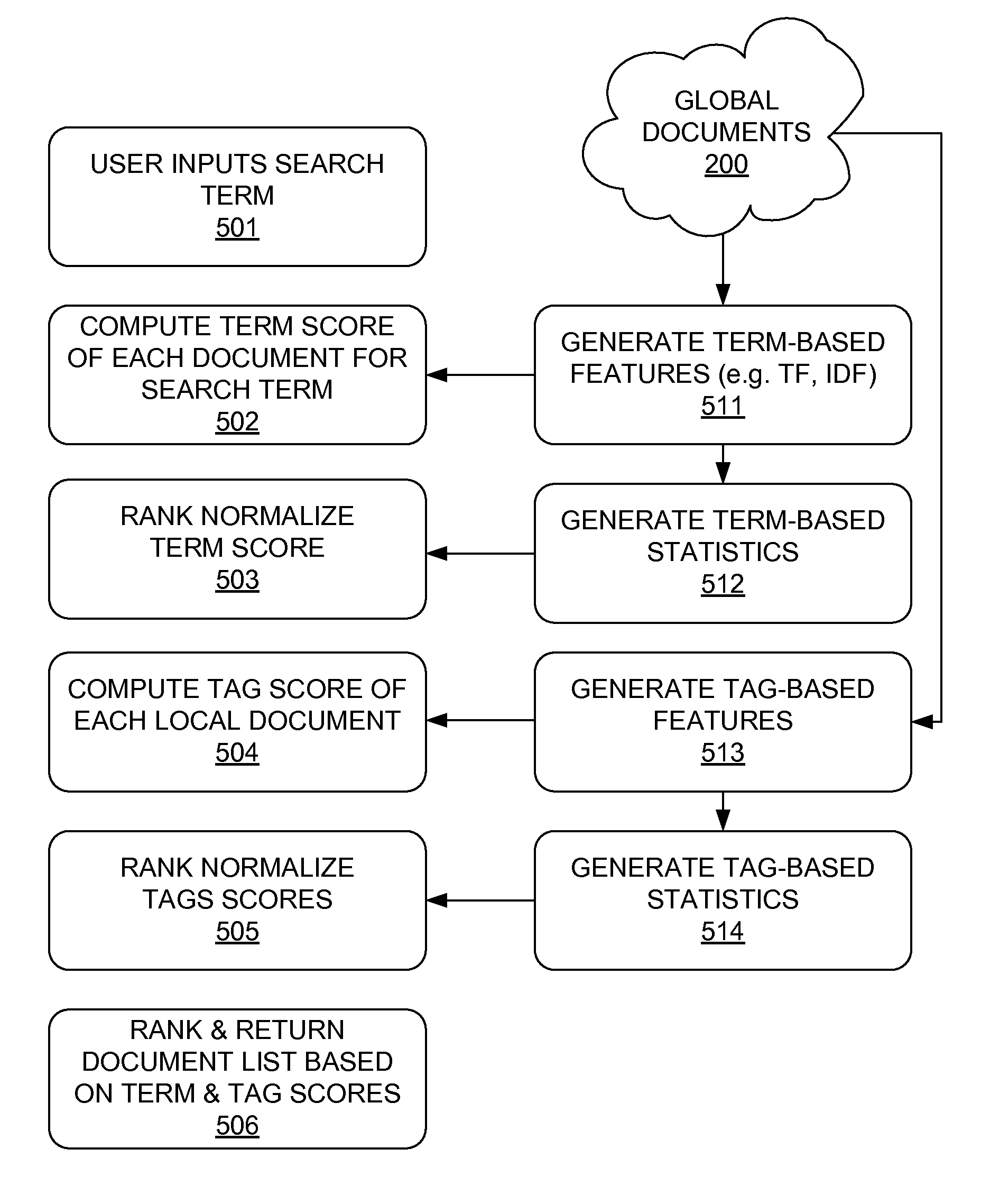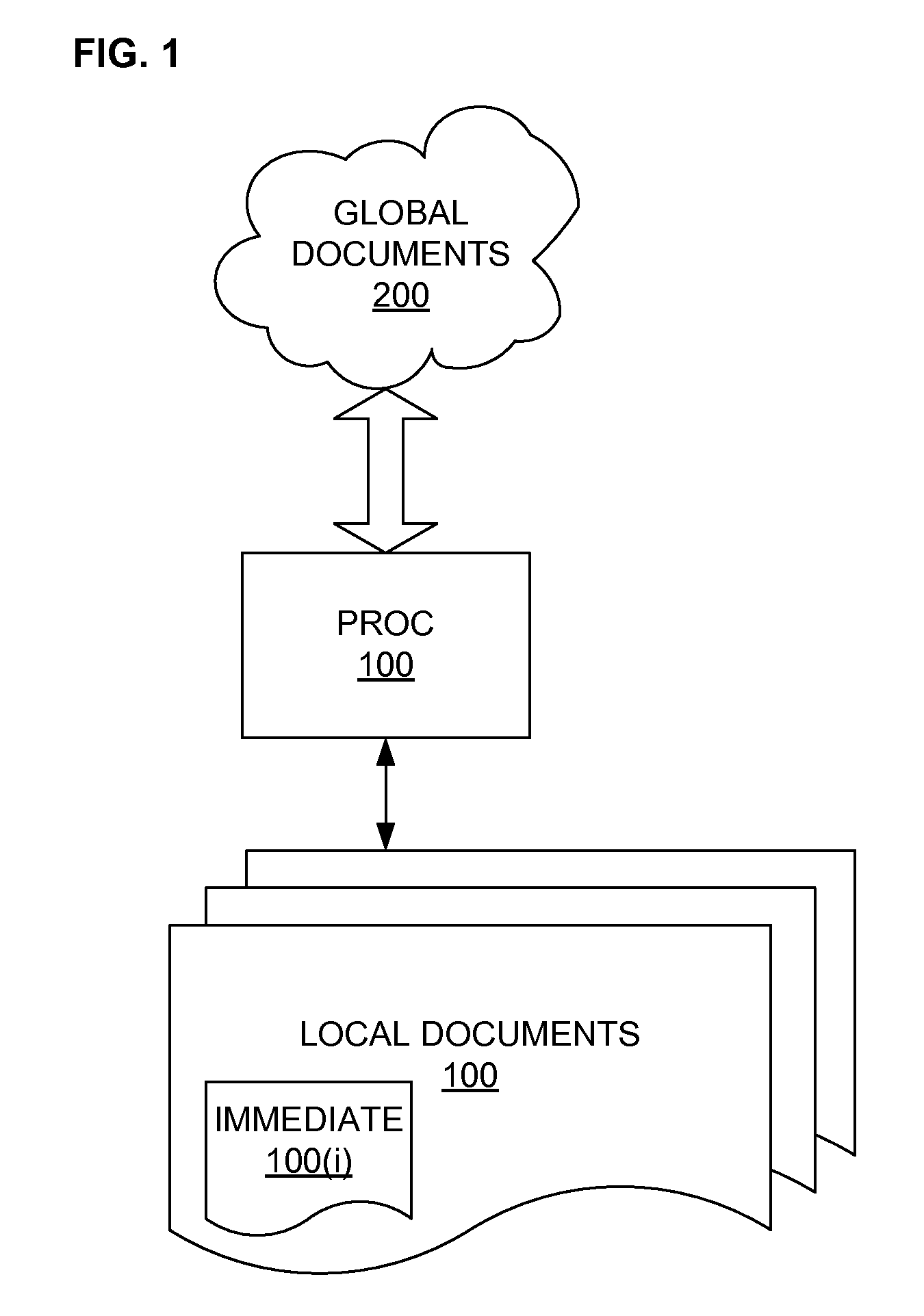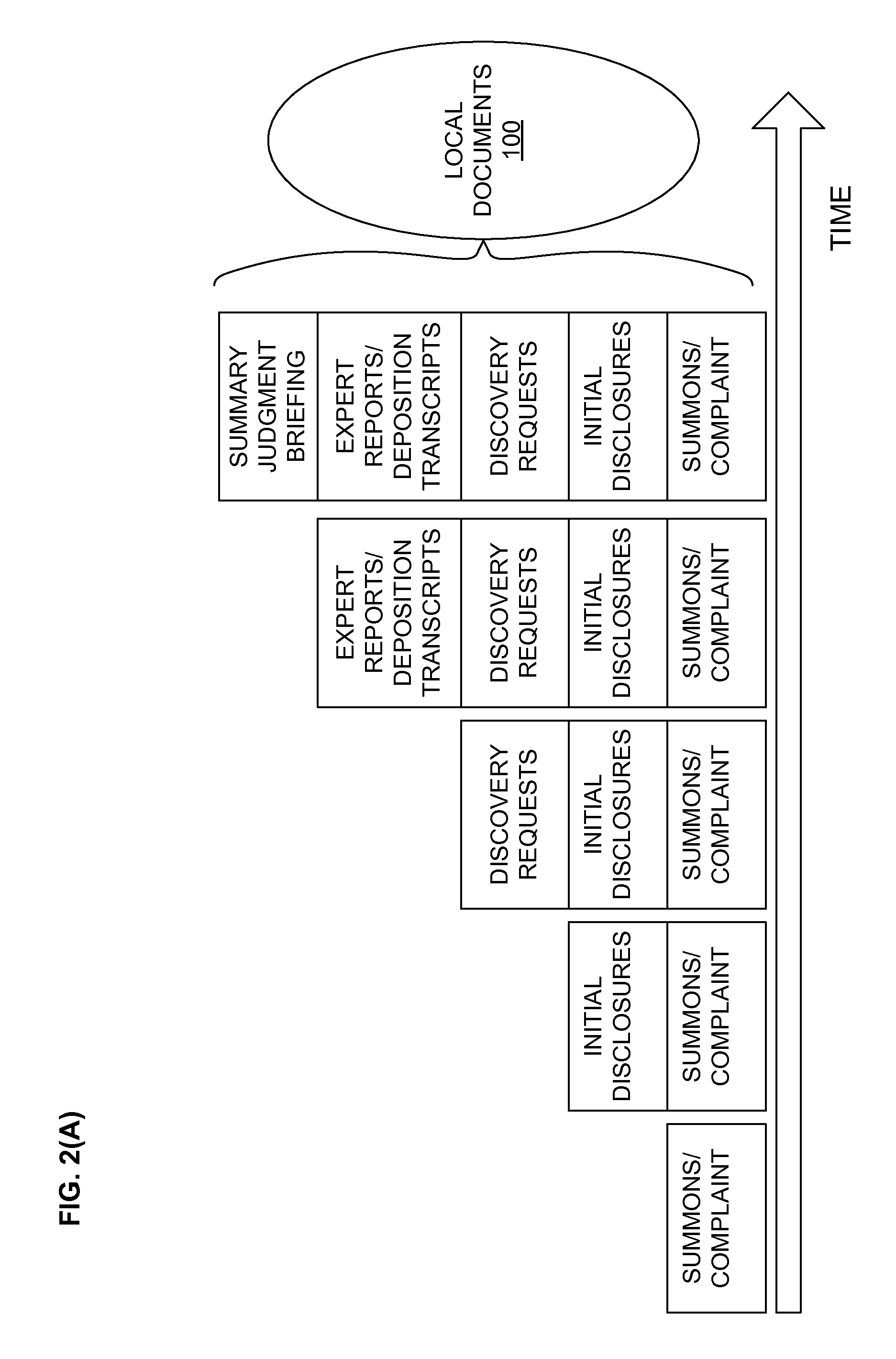While these
software tools often help to locate relevant materials, their use is often cumbersome and requires users to
forage through multiple databases and construct long Boolean queries to locate information most relevant to the matter at hand.
Considering the legal world by way of example, while these services allow consumers of legal materials to locate relevant materials, the process is often cumbersome and requires users to manually come up with ideal
search terms, often expressed as keywords in Boolean terms, in order to locate the records most relevant to the matter at hand.
One of the drawbacks of such known systems is that the users must sift through potentially large numbers of “hits” to find those that are most relevant.
Of course, every narrowing of
search terms increases the likelihood that relevant documents will be excluded; moreover, even slight deviations of
search terms often result in widely different and often irrelevant returns.
It is well known and well documented that the consumers of these services, generally lawyers and paralegals at firms and public agencies, have been frustrated with the lack of intelligence in these systems in finding relevant materials in a quick and robust manner.
Just as importantly, legal search tools that provide more intuitive results decrease the chance that an attorney will fail to discover a case that might help their
client.
The general problem—as in almost all search technology—is therefore to come up with a
system and search method that as fast as possible finds and correctly identifies and intuitively presents to a user the greatest possible number of most relevant documents according to as correct as possible an interpretation of the notion of “relevance” to the context of the user's actual needs.
Note that the concept of contextual relevance goes well beyond and complicates the simple notions of “false negatives” and “false positives,” which are difficult enough hurdles for search routines to clear.
Although simple, they lack context, such that the documents may end up being presented in an almost
random order, such as in the order the
system found them.
As everyone who has ever done such a search realizes, failure to craft just the right query typically results in a large number of both false negatives and false positives.
Users are thus at the mercy of their ability to construct the right search query and must examine a large number of irrelevant and therefore time-
wasting documents.
These systems are not as open-ended as
Internet search engines, and it's more likely that return documents are relevant to the user, but this is primarily because of the limited scope of the
database being searched (everything is by definition a patent or perhaps
patent application), and the result is still exclusively dependent on the quality of the query that the user submits.
One problem of such a “wisdom of the crowd” approach is that the crowd knows nothing about the particular context of the user.
This of course also affects the “wisdom of the user” methodology.
For example, the wisdom of the crowd does not fully meet the needs of attorneys, physicians and other professionals whose
client / patient may have unique needs, such that lesser known or lesser-cited cases are in fact better for their purposes.
One obvious
disadvantage of such an approach is that a single active document will seldom accurately reflect more than a very narrow aspect of the context of a complex matter.
Further, because litigation is often conducted by teams of attorneys each of which will only access a fraction of a litigation
record, limiting the information coupled to the
search engine to what a given attorney has open on his computer or has recently accessed will lead to the ignoring of
relevant information (i.e. that fraction of the litigation
record that a given attorney does not have open.
Similarly, each attorney has open on his screen only a fraction of a litigation
record and a user-
context based search that focuses on the user's current work environment (such as currently open document) will fail to utilize the litigation record as a whole.
In other words, although the
system accesses documents from many different sources, the scope of the search is limited by information found in the immediately available document.
 Login to View More
Login to View More  Login to View More
Login to View More 


